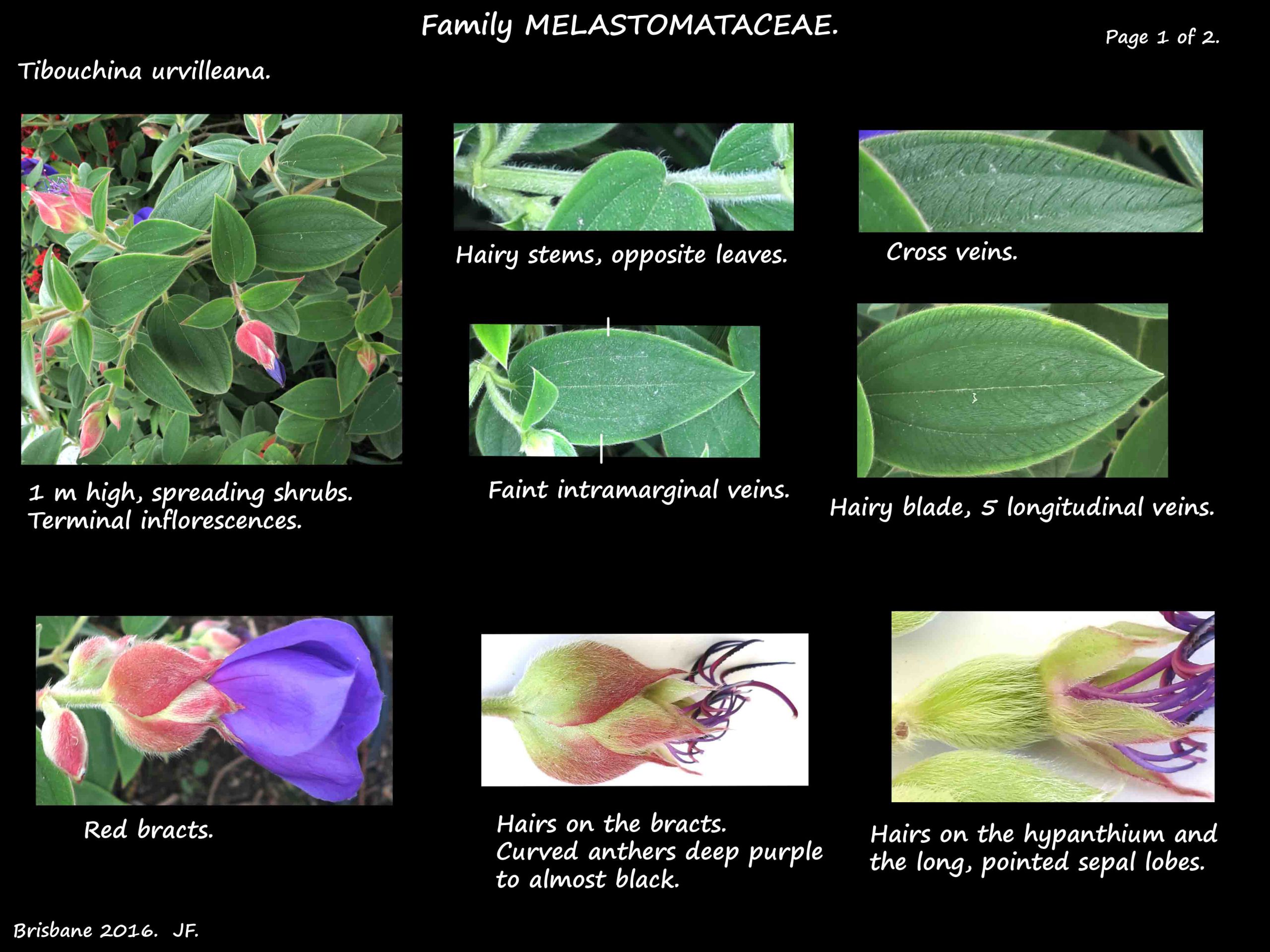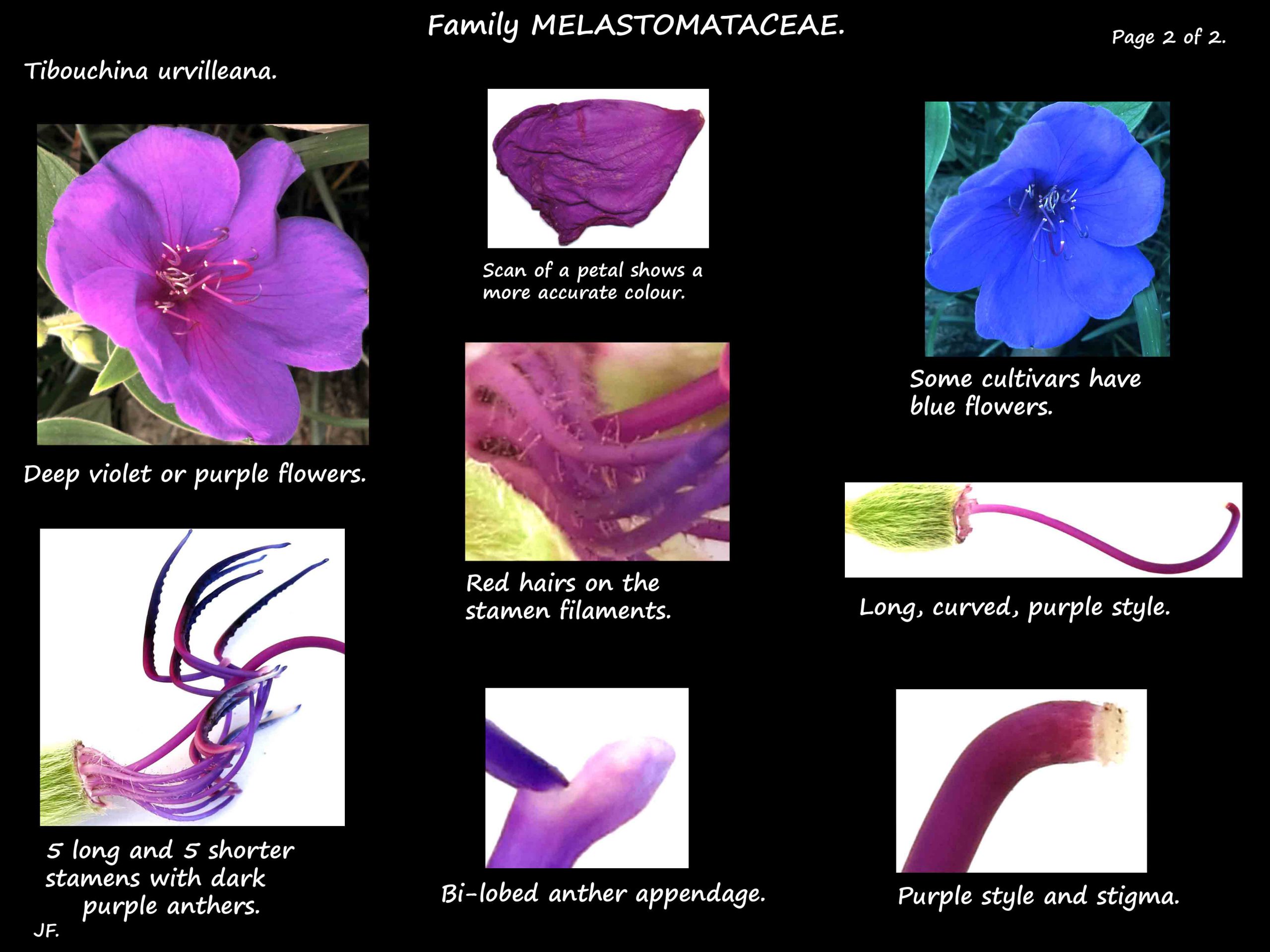Tibouchina urvilleana.
Synonyms are Tibouchina semidecandra and Lasiandra semidecandra.
Common names include Glory Flower and Princess Flower.
It has been cultivated for a long time and is common in areas around Brisbane.
They are shrubs 3 to 4 m high and can be trained as a tree or vine.
The smooth bark is grey or pale brown.
The young, reddish, 4-angled branches have small wings and are hairy.
Older branches are are round and hairless.
The ovate, elliptic to lanceolate leaves are opposite.
They are 10 to 12 cm long on hairy petioles up to 2 cm long.
The blades have pointed tips and rounded bases.
They are yellow-green above and paler underneath.
There are hairs on both surfaces.
There are 5 (3 – 7) longitudinal veins arising at the base of the blade.
Leaves turn red before they fall.
The terminal inflorescences are branched clusters of flowers up to 13 cm long.
The inflorescence stems and flower stalks are hairy as are the 2 large pinkish bracts.
The flowers are up to 8 to 10 cm across.
The hypanthium and the 5 reddish sepal lobes are densely hairy.
The 5 ovate, spreading petals are a deep violet or purple.
One cultivar has blue flowers.
The petals and sepal lobes fall off early.
There are 10 stamens with 5 shorter than the others.
The curved anthers are purple to black and have 2 basal appendages.
There are 5 hairy carpels in the ovary and one curved purple style.
The fruit are pale brown, round to ovate capsules around 10 mm wide.
Each of the 5 segments hold many small seed.
J.F.



